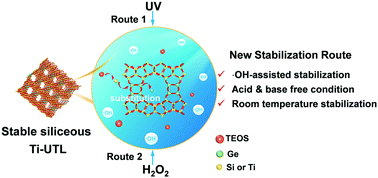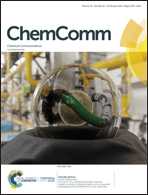Hydroxyl free radical route to the stable siliceous Ti-UTL with extra-large pores for oxidative desulfurization†
Abstract
A facile and mild method was successfully developed to prepare the stable, highly siliceous Ti-UTL zeolite with extra-large pores. The hydroxyl free radical (˙OH) was introduced for the first time to effectively promote the isomorphous substitution of Si for framework Ge under room temperature and neutral conditions, resulting in a stable titanosilicate with an outstanding catalytic activity for oxidative desulfurization.



 Please wait while we load your content...
Please wait while we load your content...